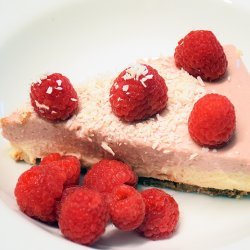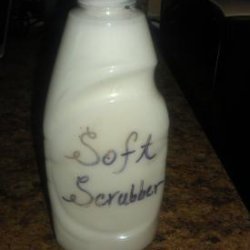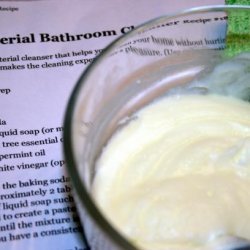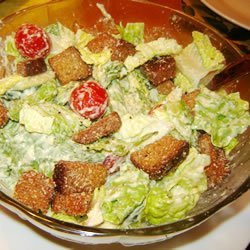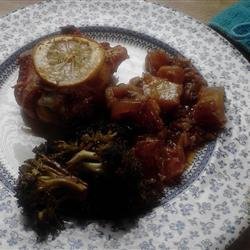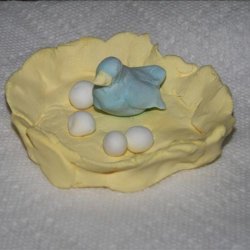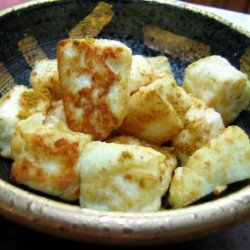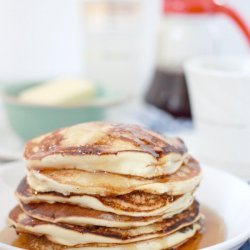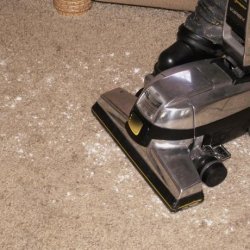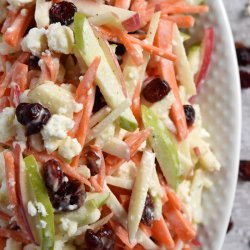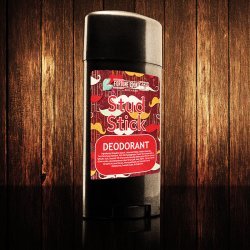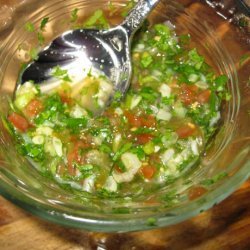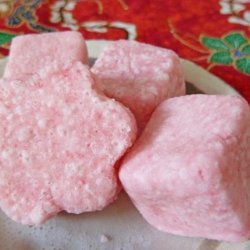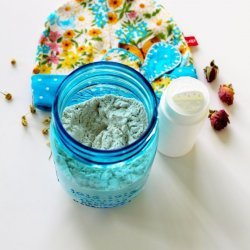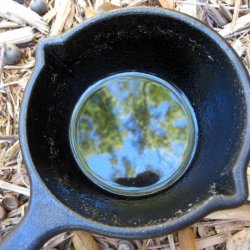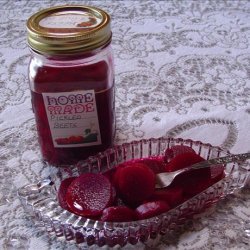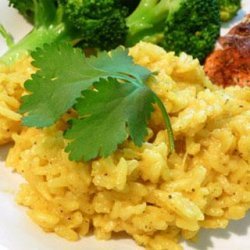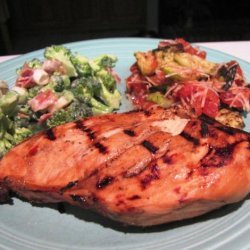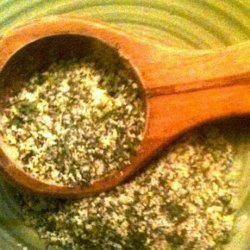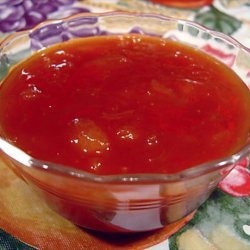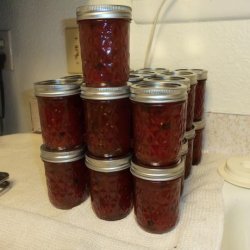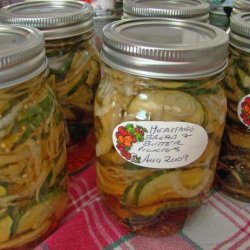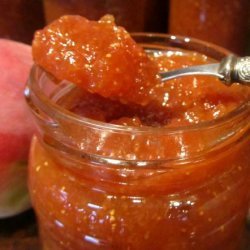Directions:
- Baking Soda is sodium bicarbonate. It has a number of useful properties. It can neutralize acid, scrub shiny materials without scratching, deodorize, and extinguish grease fires. It can be used as a deodorizer in the refrigerator, on smelly carpets, on upholstery and on vinyl. It can help deodorize drains. It can clean and polish aluminum, chrome, jewelry, plastic, porcelain, silver, stainless steel, and tin. It also softens fabrics and removes certain stains. Baking soda can soften hard water and makes a relaxing bath time soak; it can be used as an underarm deodorant and as a toothpaste, too.
- Borax is a naturally occurring mineral, soluble in water. It can deodorize, inhibit the growth of mildew and mold, boost the cleaning power of soap or detergent, remove stains, and can be used with attractants such as sugar to kill cockroaches.
- Cornstarch, derived from corn, can be used to clean windows, polish furniture, shampoo carpets and rugs, and starch clothes.
- Isopropyl Alcohol is an excellent disinfectant.
- Lemon Juice, which contains citric acid, is a deodorant and can be used to clean glass and remove stains from aluminum, clothes, and porcelain. It is a mild lightener or bleach if used with sunlight.
- Mineral Oil, derived from seeds, is an ingredient in several furniture polish and floor wax recipes.
- Soap (NOT detergent) is made in several ways. Castle soap can beuse d as a shampoo or as a body soap. Olive-oil based soap is gentlest to the skin. An all-purpose liquid soap can be made by simple dissolving the old ends of bar soap (or grated slivers of bar soap) in warm water.
- Steel Wool is an abrasive strong enough to remove rust and stubborn food residues and to scour barbeque grills.
- TSP is trisodium phosphate, a mixture of soda ash and phosphoric acid. TSP is toxic if swallowed, but it can be used on many jobs, such as cleaning drains or removing old paint, that would normally require much more caustic and poisonous chemicals, and it does not create any fumes.
- Vinegar is made from soured applied juice, grain, or wine. It contains about 5 percent acetic acid, which makes it a mild acid. Vinegar can dissolve mineral deposits, grease, remove traces of soap, remove mildew or wax buildup, polish some metals, and deodorize. Vinegar can clean brick or stone, and is an ingredient in some natural carpet cleaning recipes. Use vinegar to clean out the metallic taste in coffeepots and to shine windows without streaking. Vinegar is normally used in a solution with water, but it can be used straight.
- Washing Soda or SAL Soda is a sodium carbonate decahydrate, a mineral. It can cut stubborn grease on grills, broiler pans, and ovens. It can be used with soda instead of laundry detergent, and it softens hard water. These items are available from drug and chemical-supply stores.
- For common household tasks, try these nontoxic strategies using the above
- Ingredients:.
- Freshen air by opening windows and doors for a short period; distribute partially filled dishes of vinegar around the kitchen to combat unpleasant cooking odors; boil cinnamon and cloves in a pan of water to scent the air; sprinkle 1/2 cup borax in the bottom of garbage pails or diaper pails to inhibit mold and bacteria growth that can cause odors; rub vinegar on hands before and after slicing onions to remove the smell; use bowls of potpourri to give inside air a pleasant scent.
- All-purpose cleaner can be made from a vinegar-and-salt mixture or from 4 tablespoons baking soda dissolved in 1 quart warm water.
- Disinfectant means anything that will reduce the number of harmful bacteria on a surface. Practically no surface treatment will completely eliminate bacteria. Try regular cleaning with soap and hot water. Or mix 1/2 cup borax into 1 gallon of hot water to disinfect and deodorize. Isopropyl alcohol is an excellent disinfectant, but use gloves and keep it away from children.
- Drain cleaner. Try a plunger first, though not after using any commercial drain opener. To open clogs, pour 1/2 cup baking soda down drain, add 1/2 cup white vinegar, and cover the drain. The resulting chemical reaction can break fatty acids down into the soap and glycerine, allowing the clog to wash down the drain. Again, do not use this method after trying a commercial drain opener-the vinegar can react with the drain opener to create dangerous fumes.
- Floor cleaner and polish can be as simple as a few drops of vinegar in the cleaning water to remove soap traces.
- For vinyl or linoleum, add a capful of baby oil to the water to preserve and polish.
- For wood floors, apply a thin coat of 1:1 oil and vinegar and rub in well. For painted wooden floors, mix 1 teaspoon washing soda into 1 gallon hot water.
- For brick and stone tiles, use 1 cup white vinegar in 1 gallon water and rinse with clear water.
- Metal cleaners and polishes are different for each metal - just as in commercial cleaners.
- Clean aluminum with a solution of cream of tartar and water.
- Brass may be polished with a soft cloth dipped in lemon-and baking-soda solution, or vinegar- and-salt solution.
- Polish chrome with baby oil, vinegar, or aluminum foil shiny slide out.
- Clean tarnished copper by boiling the article in a pot of water with 1 tablespoon salt and 1 cup white vinegar, or try differing mixtures of salt, vinegar, baking soda, lemon juice, and cream of tartar.
- Clean gold with toothpaste, pewter with a paste of salt, vinegar, and flour.
- Silver can be polished by boiling it in a pan lined with aluminum foil and filled with water to which a teaspoon each of baking soda and salt have been added.
- Stainless steel can be cleaned with undiluted white vinegar.
- Oven cleaner. Sprinkle baking soda on moist surface and scrub with steel wool. Or use Arm & Hammer Oven Cleaner, declared nontoxic by Consumers Union.
- Scouring powder can be made from baking soda or dry table salt. Or try Bon-Ami Cleaning Powder or Bon-Ami Polishing Cleaner.
- Toilet bowl cleaner can be made from straight bleach (do NOT mix with any other substance except water), baking soda and vinegar, or borax and lemon juice.
- Tub and tile cleaner can be as easy as rubbing in baking soda with a damp sponge and rinsing, or wiping with vinegar first and following with baking soda as a scouring powder.
- Window and glass cleaner is easy with these tips: to avoid streaks, don't wash windows when the sun is shining. Use a vinegar-and-water solution, cornstarch-vinegar-and-water solution, or lemon-juice-and-water. Wipe with newspaper unless you are sensitive to the inks in newsprint.
Nutrition Facts
| Amount Per 1 Serving | |||
| Calories | 0 Kcal (0 kJ) | ||
| Calories from fat | 0 Kcal | ||
| % Daily Value* | |||
| Total Fat | 0g | 0% | |
|---|---|---|---|
| Amount Per 100 g | |||
| Calories | 0 Kcal (0 kJ) | ||
| Calories from fat | 0 Kcal | ||
| % Daily Value* | |||
| Total Fat | 0g | 0% | |
|---|---|---|---|
* Percent Daily Values are based on a 2000 calorie diet. Your daily values may be higher or lower depending on your calorie needs.
Find out how many calories should you eat.
Get Your Recipe of Health!
Follow RecipeOfHealth on Facebook!


